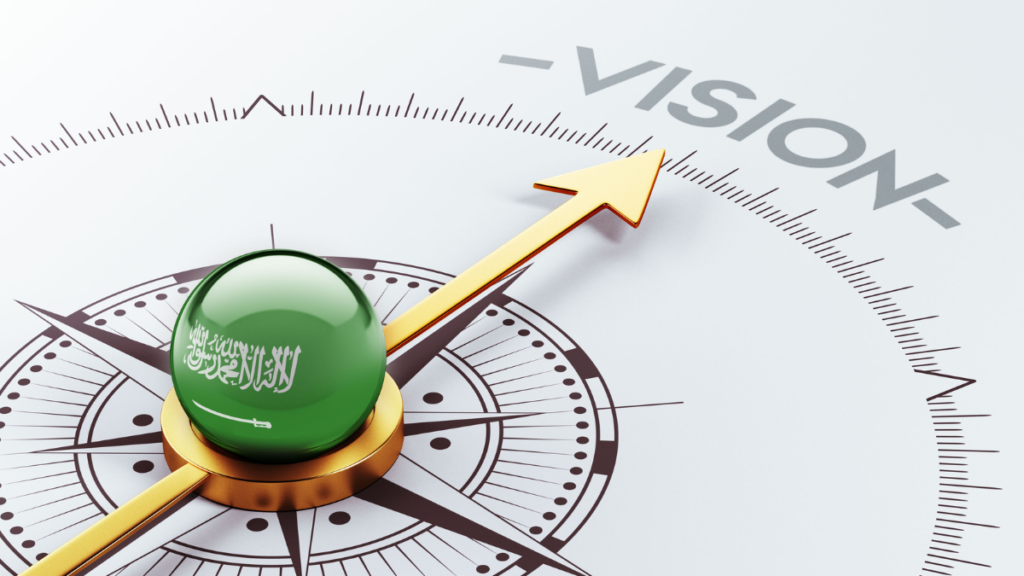Saudi Arabia’s Vision 2030, the ambitious blueprint unveiled by Crown Prince Mohammed bin Salman in 2016, continues to achieve remarkable milestones as the Kingdom accelerates its transformation into a global economic powerhouse. With a focus on reducing its dependence on oil revenues, fostering innovation, and enhancing the quality of life, Saudi Arabia is making headlines with groundbreaking projects such as NEOM, the Red Sea Project, and Qiddiya. The recent signing of multi-billion-dollar contracts with international firms underscores the Kingdom’s unwavering commitment to realizing its Vision 2030 goals.
Table of Contents
The Pillars of Vision 2030
Vision 2030 is built on three core pillars: a vibrant society, a thriving economy, and an ambitious nation. These pillars are designed to position Saudi Arabia as a global leader in innovation, tourism, and sustainability. The initiative aims to diversify the economy by investing in non-oil sectors such as entertainment, tourism, technology, and renewable energy, while also improving infrastructure, healthcare, and education.
NEOM: The City of the Future
One of the most ambitious projects under Vision 2030 is NEOM, a $500 billion mega-city being built from scratch in the northwestern region of Saudi Arabia. NEOM is envisioned as a hub for innovation, sustainability, and cutting-edge technology. The city will be powered entirely by renewable energy and will feature smart infrastructure, autonomous transportation, and advanced industries such as biotechnology and robotics.
Recent developments include the launch of THE LINE, a revolutionary urban concept comprising two parallel skyscrapers stretching 170 kilometers, designed to house 9 million residents with zero cars, zero streets, and zero carbon emissions. NEOM has also signed contracts with global firms for the construction of its infrastructure, including partnerships with companies like Bechtel and Hyundai Engineering & Construction.
The Red Sea Project: A Luxury Tourism Destination
The Red Sea Project is another cornerstone of Vision 2030, aiming to position Saudi Arabia as a global leader in luxury tourism. Spanning over 28,000 square kilometers, the project includes an archipelago of 90 islands, pristine beaches, and coral reefs. The first phase, which includes 16 hotels and an international airport, is set to open in 2024.
The project is being developed with a strong emphasis on sustainability, with plans to power the entire destination using renewable energy and to implement strict conservation measures to protect the environment. The Red Sea Development Company has awarded contracts worth billions of dollars to international firms, including ACWA Power for renewable energy solutions and Foster + Partners for architectural design.
Qiddiya: The Entertainment Capital
Qiddiya, located just 40 kilometers from Riyadh, is set to become the Kingdom’s premier entertainment, sports, and cultural destination. The project spans 334 square kilometers and will feature theme parks, sports facilities, concert venues, and cultural attractions. Qiddiya aims to attract 17 million visitors annually by 2030, contributing significantly to the Kingdom’s tourism sector.
The first phase of Qiddiya, which includes a Six Flags theme park and a motorsports complex, is expected to open in 2024. The project has already signed agreements with global entertainment giants, including Warner Bros. and Six Flags, to bring world-class attractions to Saudi Arabia.
Economic Diversification and International Partnerships
A key objective of Vision 2030 is to reduce Saudi Arabia’s reliance on oil revenues by diversifying its economy. The Kingdom has made significant progress in this regard, with non-oil revenues reaching record levels in recent years. The government has also implemented reforms to improve the business environment, attract foreign investment, and support the private sector.
The recent signing of multi-billion-dollar contracts with international firms highlights Saudi Arabia’s commitment to leveraging global expertise to achieve its Vision 2030 goals. These partnerships span various sectors, including construction, technology, renewable energy, and entertainment. For example, Saudi Arabia has partnered with SoftBank to launch the $100 billion SoftBank Vision Fund, which invests in cutting-edge technologies worldwide.
Challenges and Opportunities
While Vision 2030 has achieved significant milestones, the journey is not without challenges. The scale and complexity of projects like NEOM and the Red Sea Project require substantial investment, technical expertise, and coordination. Additionally, the Kingdom must navigate global economic uncertainties, fluctuating oil prices, and geopolitical tensions.
However, the opportunities far outweigh the challenges. Vision 2030 has already transformed Saudi Arabia’s economic landscape, creating new industries, generating jobs, and attracting global attention. The initiative has also improved the Kingdom’s global standing, positioning it as a leader in innovation, sustainability, and economic diversification.
A Vision for the Future
As Saudi Arabia continues to make strides towards achieving Vision 2030, the world is watching closely. The Kingdom’s bold ambitions and transformative projects are not only reshaping its economy but also redefining its role on the global stage. With NEOM, the Red Sea Project, Qiddiya, and other initiatives, Saudi Arabia is building a future that is sustainable, innovative, and prosperous.
As Crown Prince Mohammed bin Salman once said, “We have all the means to achieve our dreams and ambitions. There is no limit to what we can achieve.” Vision 2030 is a testament to this belief, and its success will serve as a model for nations around the world.
